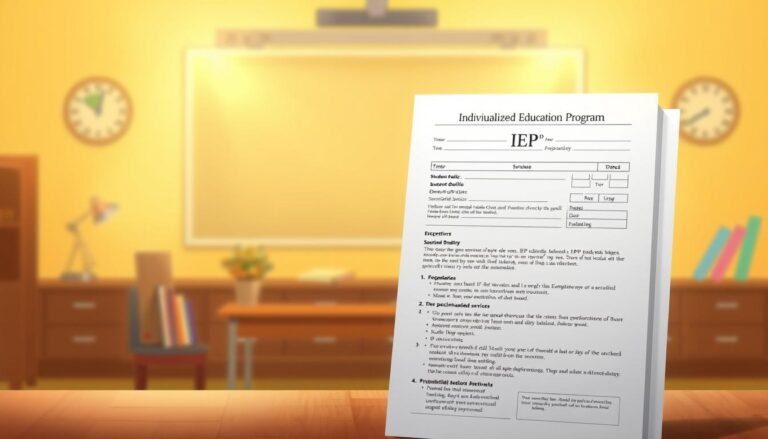
Innovative Tools and Resources for Teaching Math to Students with Learning Challenges: The Ultimate Guide
Introduction
Teaching math to students with learning challenges can often feel like navigating a minefield—each step laden with potential obstacles. However, with the emergence of innovative tools and resources for teaching math to students with learning challenges, educators now have access to a treasure trove of techniques and technologies designed to facilitate understanding and promote engagement. In this article, we will explore the best strategies that can transform math lessons into an enjoyable experience for both teachers and learners.
Imagine a classroom where every student, regardless of their challenges, can grasp mathematical concepts with confidence. This vision is becoming increasingly attainable through creative methodologies and advancements in educational technology. By leveraging innovative tools and resources for teaching math to students with learning challenges, we can empower these students to achieve their academic potential.
Understanding Learning Challenges in Math
Before we dive into the tools and resources available, it’s vital to understand the spectrum of learning challenges. From dyscalculia, which affects numerical understanding, to ADHD, which can impact focus and attention, students face distinct barriers. A tailored approach that incorporates innovative tools and resources for teaching math to students with learning challenges can create inclusive learning environments that accommodate various needs.
Common Learning Challenges in Math
| Type of Learning Challenge | Description |
|---|---|
| Dyscalculia | Difficulty in understanding numbers and learning math concepts. |
| ADHD | Challenges with attention control, leading to difficulties in concentrating during math-related activities. |
| Dyslexia | Problems with reading text, which can affect understanding word problems in math. |
| Autism Spectrum Disorder | May require personalized approaches to learning and social interaction to comprehend collaborative math tasks. |
| Visual Impairments | Need for tactile or auditory math tools and resources. |
Understanding these challenges allows educators to select the most suitable innovative tools and resources for teaching math to students with learning challenges.
Innovative Tools and Resources
1. Visual Aids and Manipulatives
One of the most effective methods for teaching math is utilizing visual aids and manipulatives. Tools such as base-ten blocks, number lines, and visual models allow students to visualize mathematical concepts, making them tangible.
Case Study: Base-Ten Blocks in Action
Analysis: A third-grade teacher implemented base-ten blocks for students struggling with place value. By allowing students to physically manipulate the blocks, they gained a deeper understanding of how numbers are constructed. The results showed significant improvement, with 85% of the students mastering the concept by the end of the unit.
2. Technology-Enhanced Learning Tools
Using technology can significantly enhance learning experiences. Apps specifically designed for math education, such as "Mathway" and "Tynker," provide interactive platforms that cater to various learning styles.
Case Study: Mathway’s Impact on Student Engagement
Analysis: An afterschool program integrated Mathway to assist students with learning challenges. The interactive quizzes and step-by-step solutions increased engagement. After just one semester, teacher reports indicated a 40% increase in exam scores among participants.
3. Gamification of Learning
Gamification adds an element of fun to learning by transforming math activities into games. Platforms like "Prodigy Math" run math-based games that reward progress with points, fostering a competitive yet cooperative spirit.
Case Study: Prodigy Math and Student Motivation
Analysis: A fifth-grade math class adopted Prodigy Math as part of their curriculum. Students showed a dramatic increase in motivation; attendance rose and students were more willing to engage with challenging math problems, reflected in a 30% improvement in standard test scores.
4. Specialized Curriculum Designs
Curricula specifically designed to address various learning needs can also be a game-changer. Programs like "TouchMath" focus on multi-sensory learning and provide a structured approach.
Case Study: TouchMath Implementation
Analysis: A resource room included TouchMath as its instructional method for students with dyscalculia. This curriculum’s multi-sensory approach helped students achieve record results; 90% of them could complete math assignments independently within three months.
5. Collaborative Learning Environments
Creating opportunities for group work can help students learn from one another. Collaborative activities encourage peer tutoring, which reinforces students’ individual understanding of math concepts.
Case Study: Peer Tutoring in Math Classes
Analysis: A classroom experiment involving peer tutoring sessions revealed that students with learning challenges benefited greatly from teaching and learning from classmates. This approach not only improved their math scores but also enhanced their social skills.
6. Assistive Technology
Tools designed for accessibility can provide significant support. Screen readers, speech-to-text software, and adapted keyboards help students navigate math tasks more effectively.
Case Study: Speech-to-Text Software in Math
Analysis: In a middle school classroom, the incorporation of speech-to-text technology allowed students with writing difficulties to complete complex math problems independently. Results showed a 50% reduction in task completion time without sacrificing accuracy.
Importance of Teacher Training
While the tools and resources are essential, educator training in these innovative methodologies is equally critical. Professional development programs can equip teachers with the skills necessary to implement and adapt these resources effectively.
Building a Supportive Learning Environment
Creating a classroom atmosphere that fosters inclusivity and support is paramount. This means establishing a space where students feel comfortable expressing challenges and seeking help with innovative tools and resources for teaching math to students with learning challenges at their disposal.
Conclusion
In closing, innovative tools and resources for teaching math to students with learning challenges are not just essential for enhancing understanding; they can transform the entire educational experience. By adopting visual aids, leveraging technology, gamifying lessons, and fostering collaborative environments, educators can cultivate a thriving classroom. The heart of teaching lies in empowering every student to overcome challenges and achieve success.
As educators, it’s vital to remain adaptable, continually seeking to integrate fresh strategies that resonate with students’ unique needs. The future of math education is bright and full of possibilities—are you ready to embrace it?
FAQs
1. What are some common learning challenges in math?
Common challenges include dyscalculia, ADHD, visual impairments, and difficulties associated with autism spectrum disorder.
2. How can visual aids help students with learning challenges?
Visual aids provide tangible representations of abstract mathematical concepts, making learning more accessible.
3. What technologies are best suited for teaching math to students with learning challenges?
Apps such as Mathway, Prodigy Math, and Tynker are effective in enhancing engagement through interactive learning.
4. How does gamification impact student learning?
Gamification fosters motivation and engagement, making math more enjoyable while effectively increasing proficiency in problem-solving.
5. Why is teacher training important when using innovative tools?
Effective use of innovative tools requires trained educators who can adapt methodologies to fit diverse learning styles and needs.
By equipping ourselves with the right resources and frameworks, we can ensure that no learner is left behind in the pursuit of mathematical proficiency. Let’s strive for a future where every student, regardless of their challenges, can succeed in mathematics!
















